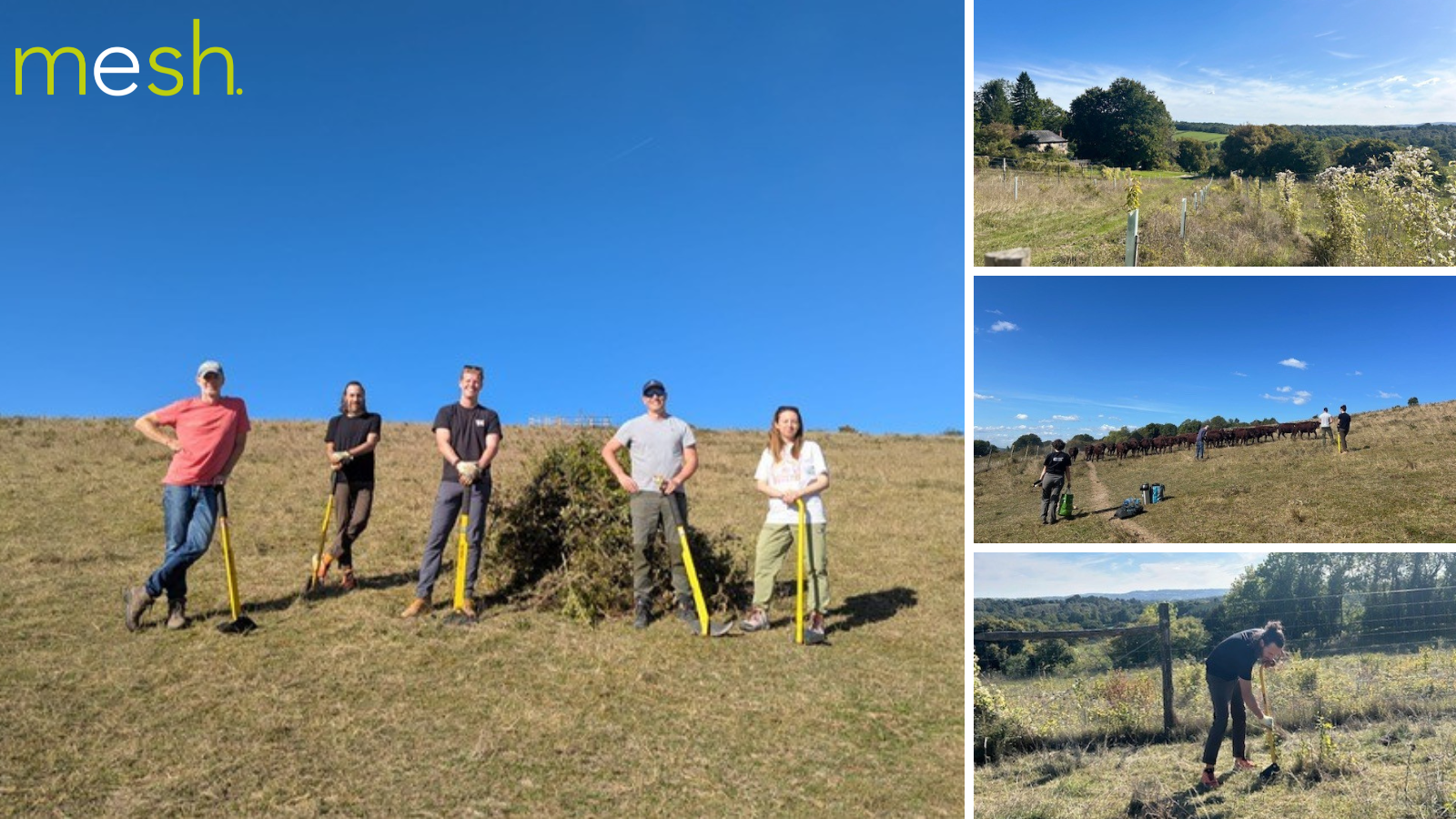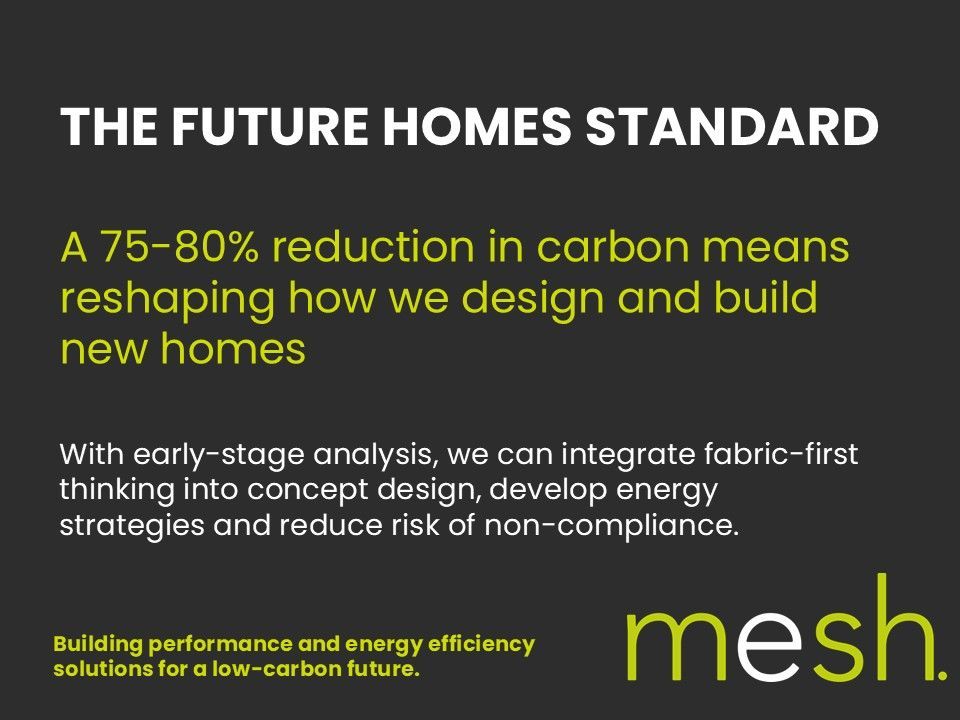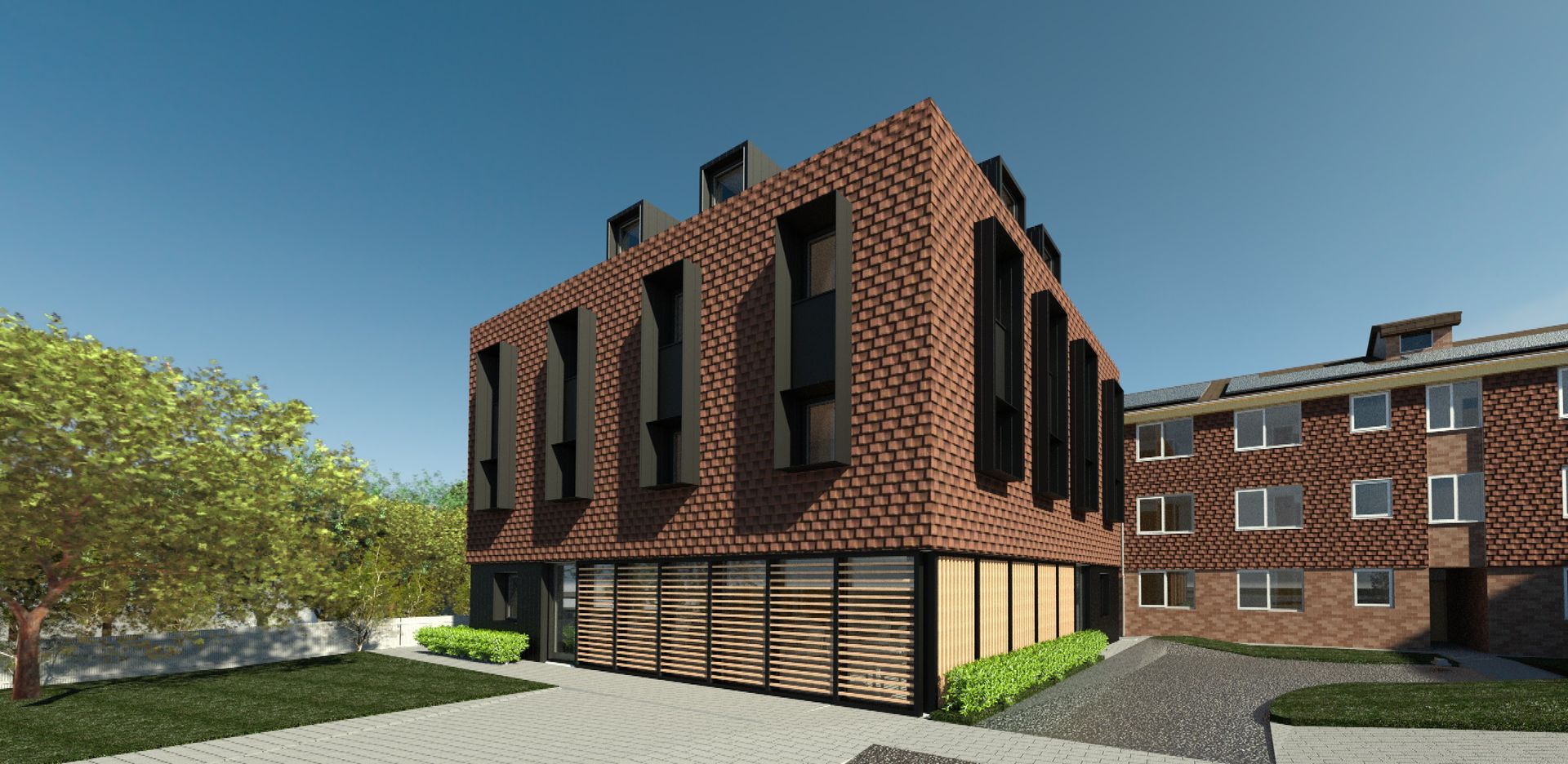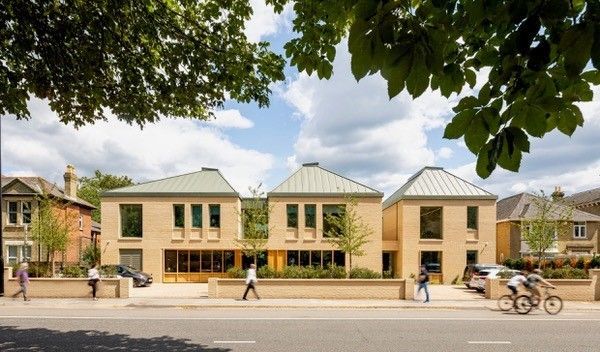Cut your SME’s Energy Bills With These 5 Tips
This week I had the pleasure of speaking at the Guildford Sustainable Business Network on the topic of how to “Cut your SME’s energy bills”. Having not written a blog for far too long and having seriously started to practically reduce the energy usage of our own Farnham offices, I thought it was a great time to scribe my top five energy saving tips for businesses.
In my mind, I have compiled this list based on where we often see the greatest savings, so my first two tips deal with electricity and power before going on to heating, ventilation, and lighting.
It is also worth mentioning that from a practical point of view we have assumed here that your offices cannot be practically transformed by doing building works and better insulating the fabric of the building. As such I won’t mention fabric improvements which are always top on most lists!


Measure and understand what you are using
Before you spend any money and get carried away on energy saving, the best thing in my experience is to measure the buildings electrical and heating fuel energy use. These two uses will no doubt be the lion’s share of your total annual energy bill. Either heating or electrical use can be measured using a variety of smart meters, but particularly electrical loads can now be cheaply and very effectively tracked on mobile apps. We used an Emporia Vue Gen2 system from the U.S. and within a short while was live streaming data to my phone via an app.
Once you know when fuel and electricity is being used you will often spot odd and wasteful usage.
In my office’s case when we installed electrical measuring equipment, I spotted a business in the building was running a heater all weekend when no one was in the building. A new £15 timer saved me the landlord, £200 per year in wasted electricity. Bargain!
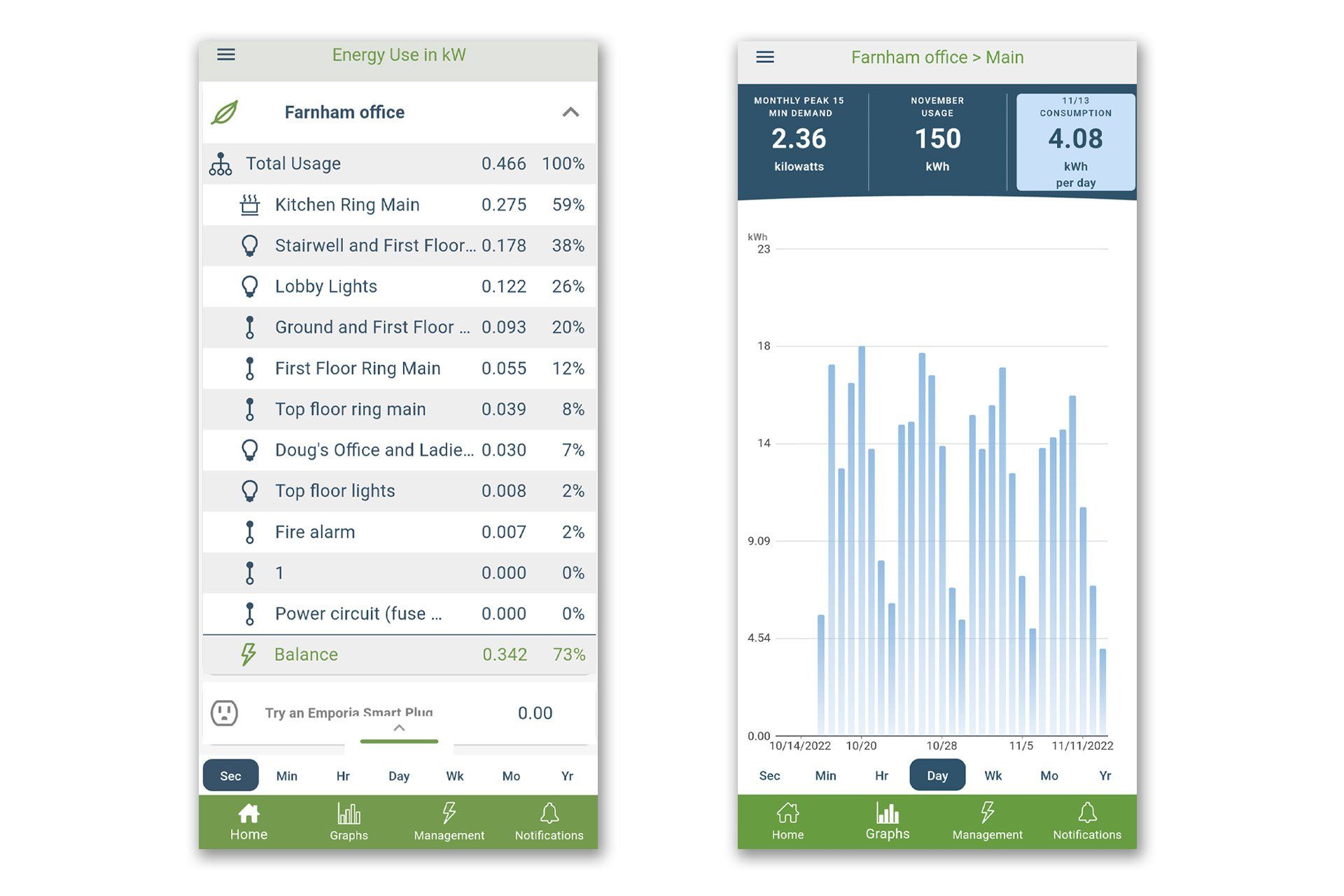

Tackle vampire electrical loads
Electrical loads are not all created equal, and we think of kettles and other such devices as the ones we should stop using. In fact, the most energy hungry appliances are those like fridges, monitors left on and other devices like printers, etc left on standby. Because these are on 24/7, even very low levels of background usage all add up to big numbers.
Once you have found these contributing appliances figure out if they are really needed, whether they can be timed and also whether they can be properly turned off when not in use.

Better control (smart thermostats, boiler temperature and TRVs)
Coming back to heating and fuel usage, many improvements can be made to smart control of office heating. Are you sure that the heating for your business is only on during working hours and you have full control for the heating outside of office hours too? In my case we had a basic and semi-smart thermostat that someone at some time could access with their phone. I had no idea what the settings were and the thermostat in the hallway was always fiddled with. It was clear that the daytime, evening and weekend setting likely were not optimised.
I spend £150 on a new Heatmiser Neostat which once installed was connected to my phone in a matter of seconds and I had full control over programming whenever I wanted. I could fully control and optimise on/off times, set back times and temperatures for the evening and review how the building was reacting with historic data available for me to view.
To improve the feeling of thermal comfort in the offices I made sure that all thermostatic radiator valves on radiators were operational. By doing this and with some adjustment over the first week we managed to have the building temperature and energy usage settle down into a comfortable place to work.
As a final step, I incrementally dialled down the radiator flow temperature with (the knob on the front of the boiler) down from 75-80 Celsius down to 65 Celsius. This lower temperature allows less gas to be burnt and combined with the timing and radiator temperature control is very effective in reducing gas usage and bills.
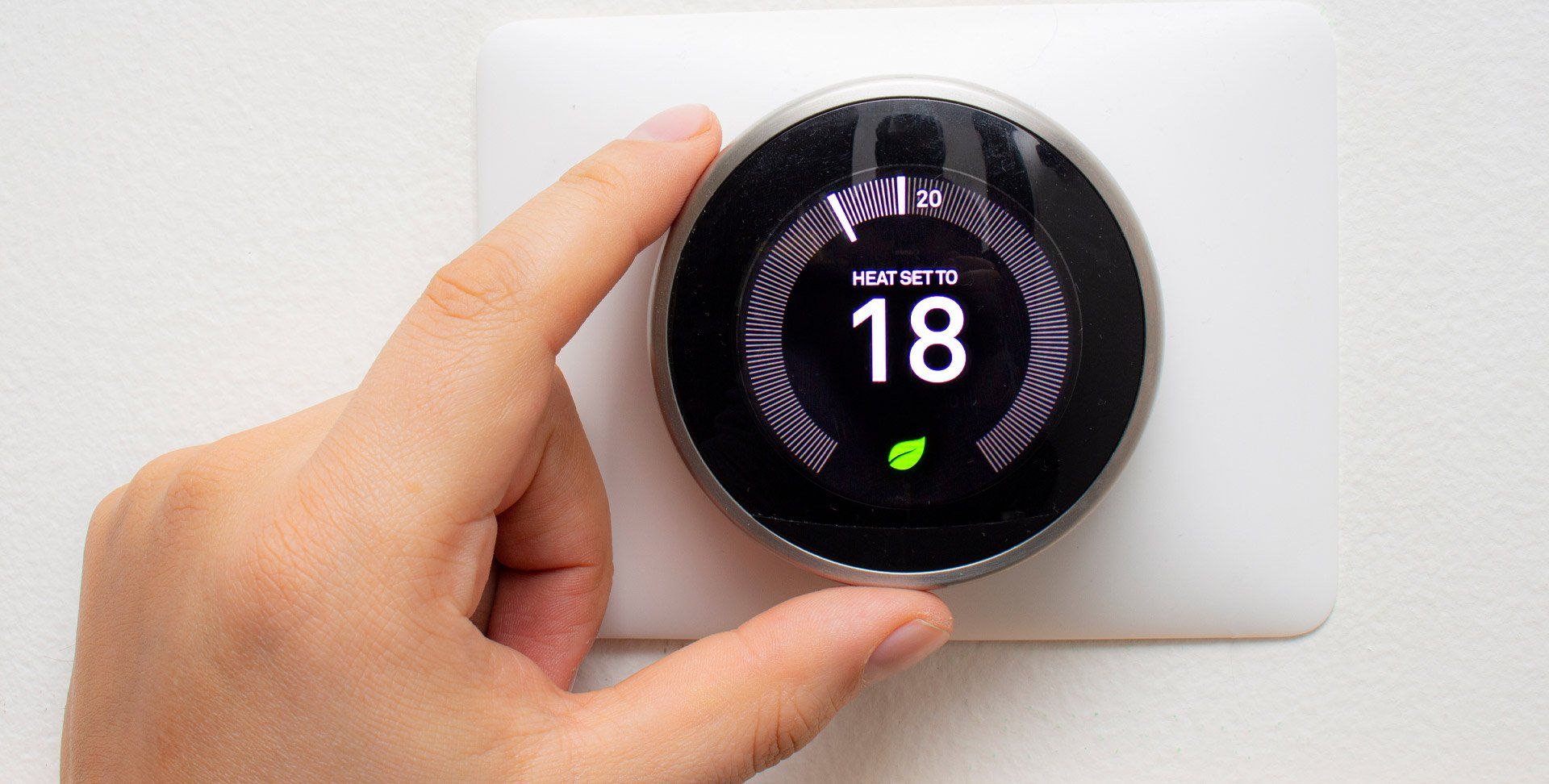

Better summertime ventilation
If you have air conditioning in your building during summer months, it pays to try to turn it off or make sure it is not quite as chilly as it used to be. Air conditioning gobbles electricity and money and with some thinking about ventilation in the building it may be possible to reduce or eliminate the need for this.
Of course, if you are in a built-up area, it may not be possible to open windows but cross ventilation (getting airflow across a room) is massively effective in shifting high temperature air out of the space you are in. Also, opening roof lights can be a huge help in reducing the need for mechanical cooling and costly bills by purging warm air from the top of the room or building using the principles of rising warm air drawing in cooler air from below.
We use this technique a lot in our three-storey building in warmer weather and it generally works a treat.

LED Lighting and controls
Finally, look at the lighting used in the building. If you have taken the advice in step 1 you will know how much lighting is costing you and when it is on. Many people have LED lights in their homes and costs have come down considerably. LED lighting replacing halogen and other forms of ageing incandescent lighting can have an instantaneous and effective cost saving. A 7W LED light replacing a 50W GU10 bulb will literally save you 85% on your electricity usage.
Many grants are available for LED lighting replacement and most people get their money back in 2 years having made the change.
Controls of the lighting in offices or warehouses, like heating, is key. Having movement sensors to turn lights on when there is activity and off when no one is there all help in saving energy. Also reviewing the level of lighting needed for your business office use is a great opportunity to make sure you have what you need in the right areas, and you aren’t being wasteful.

So, give these five things a try and see how you get on. Yes, it will take effort, yes it will take investment and yes it may involve some number crunching but combined you can make big changes to your usage, save valuable money every month and learn a lot along the way.
Good luck!
SHARE THIS POST WITH YOUR NETWORK


